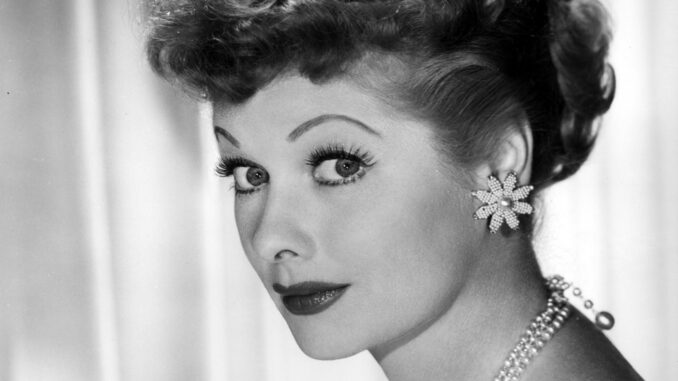
I Love Lucy, the 1950s sitcom starring Lucille Ball and Desi Arnaz, was groundbreaking in many ways. The casting of Cuban band leader Arnaz in a lead role was a hard sell to CBS until Ball and Arnaz proved they worked better as a team by developing a popular live vaudeville show. They challenged CBS’s insistence on filming in New York City by successfully shooting in front of a live studio audience with three 35mm film cameras in Hollywood, a practice that set a new standard going forward. Their partnership off-screen was a powerful entity itself, with their production studio, Desilu Productions, championing series like Star Trek when no one else would. Yet the popular show came very close to cancelation one time, all thanks to a conflict with the National Association of Broadcasters over one seemingly innocuous event: Lucille Ball’s pregnancy.
‘I Love Lucy’ Had to Deal With the Television Code
Not unlike the infamous Hays Code that dictated the film industry between 1934 and 1968, the Code of Practices for Television Broadcasters, aka the Television Code, was a self-regulation initiative adopted by the National Association of Broadcasters between 1952 and 1983. It set ethical standards that television programming should adhere to, standards that hewed closely to its movie industry kin. Profanity, illicit sex, drunkenness, and drug addiction were prohibited outright. Television programs also couldn’t portray family life, God, religion, and law enforcement officials in a negative light. Conversely, crime and horror weren’t to be portrayed in a positive fashion. Performers were to dress and move within the “bounds of decency.” News reporting was expected to be “factual, fair, and without bias,” with any commentary and analysis of the news clearly defined as being such (maybe this one should come back into play, no?). Religious programming was a must, and broadcasters were discouraged from charging religious organizations for that time.
The implementation of the Television Code fell within weeks of the I Love Lucy premiere. As a result, it became the environment the series was working under, and successfully at that. Her Lucy Ricardo wasn’t the stereotypical American housewife, modeled on TV by the likes of Barbara Billingsley’s June Cleaver on Leave it to Beaver. Lucy was a disaster waiting to happen, a woman whose actions were fodder for an array of comic routines that have since become legendary. As Carol Burnett once said, “She took you on some kind of a wild journey over those 22 minutes, and you could not wait to see what else she was going to cook up.” Lucy constantly exasperated Arnaz’s Ricky Ricardo, but there was no doubt the two loved one another. The series was a winning mix of flat-out comedy and sentiment, with an audience that reached 11 million within six months of its premiere, 67 of every 100 nine o’clock Monday night viewers. Success like that breeds clout, and Ball and Arnaz weren’t afraid to use it.
The Television Code Opposed ‘I Love Lucy’ Referencing Lucille Ball’s Real Pregnancy
The series was nominated for an Emmy for Best Comedy Show, and on May 26, 1952, Time magazine had Ball on its cover, with a headline that read, “Lucille Ball, Rx for TV: A Clown with Glamour.” I Love Lucy was thriving under the Television Code, but the two were about to clash as Ball was pregnant with her second child. The Draconian code was clear that anything sexually suggestive was not allowed on the air, which included the topic of pregnancy. If you’re confused about how point A gets to point B, well, you’re not alone, so here’s the logic. Talking about pregnancy implied that a couple, married or not, had engaged in a sexual act. Ball and Arnaz, however, not only planned on talking about pregnancy, they were prepared to have the pregnancy as a focal point on the series, with the on-screen couple mirroring what was happening off-screen.
CBS and sponsor Philip Morris vehemently opposed the prospect, and Arnaz was told, in no uncertain terms, “You cannot show a pregnant woman on television” by the Biow advertising agency. The less-than-subtle implication was that acknowledging Ball’s pregnancy on the program could hold dire consequences for the program’s future. According to the previously cited Time article, Arnaz pushed back, saying, “What is so wrong if she has a baby in the show as Lucy Ricardo?” Executives, seeking a compromise, suggested that Lucy could simply hide the pregnancy by being filmed behind chairs or tables, a suggestion Arnaz responded to with a simple, “Not Lucy.”
